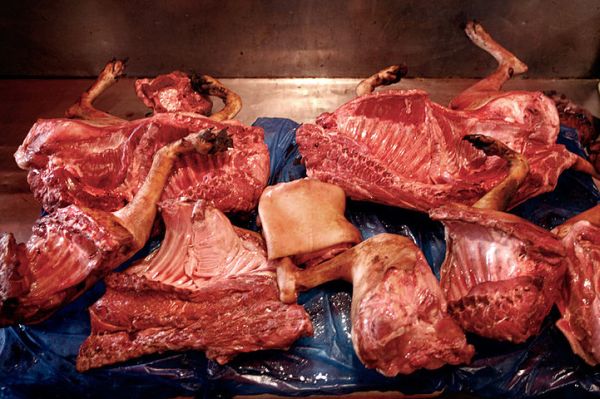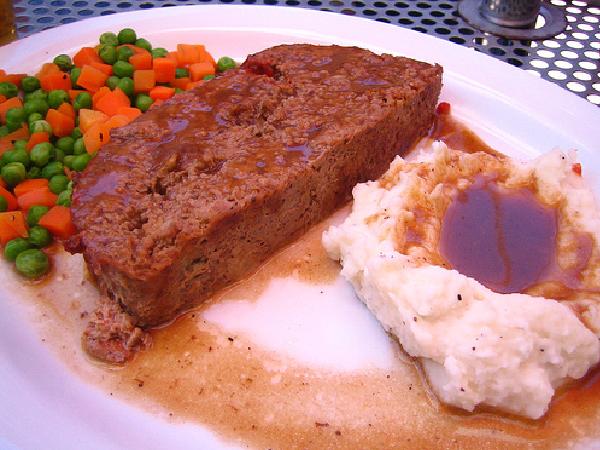The origin
Dog meat stated as a popular cuisine in China. Later, in almost the similar time in history, it spread to countries like Mexico, Korea and Thailand. Now, it is eaten all over the world in many countries.
The cuisine
Dog meat refers to mostly those parts of the body of a dog that are edible. Mostly domestic dogs are chosen to prepare such cuisines. Dog meat is not only an adventure food but according to the history, it was also the survival food during the times of war and other periods of hardships. The people of Siberia, northern Canada, and Greenland eat dogs during the time of emergencies. There are quite a lot of contradictions regarding dog as a food. While it is considered as a traditional cuisine in many parts of the world, some countries still find consumption of dog food as highly offensive. Jewish and Islamic religions highly object the consumption of dog food.

The wacky tinge
Among the wackiest views about consumption of dog flesh, those of the Jewish and the Islamic origin are notable ones. They consider eating dogs as forbidden according to their religion since dogs are regarded as unclean in both the religions. The history also holds a significant story about dog flesh consumption. During the times of extreme famine and hardships, the war victims of the Mexican-American War resolved in consuming the meat of their own pet dogs. Later on, eating dog meat spread rapidly as a part of cannibalism.
Roald Amundsen, the Norwegian explorer, on his expedition to the South Pole, consumed some of his sledge dogs on occasion of extreme hunger and scarcity of food as he reached closer to his destination. In this respect, he remarked that the dogs were similar to ponies. By emphasizing on consumption of dog meat on the way to the expedition he believed that he reduced the burden of carrying more of human food for his team members as well as carrying dog food for the sledge dogs. Moreover, the dogs were happy to be fed with fresh dog meat too everytime they felt hungry. This made the sledge dogs, that were moving with the team, more strong and energetic and at the same time the size of the pack was also getting reduced as they were approaching their destination gradually.
The Wildlife Act of Canada finds it illegal to sell meat of any wild animal. But the most surprising thing to know is that there is no law that objects people selling and eating canine meat if the dog has been slaughtered in front of the federal inspector.
In Taiwan dog meat is referred to as âeuphemismâ. This implies fragrant meat. They believe that dog meat have certain health benefits, thus it should be a part of regular diet. Later, the pressure of the animal activists and welfare groups of Taiwan and wish for a better international perception forced Taiwan government to announce a ban on slaughtering and selling of dog meat. However, the practice continues till date, but illegally.
Consumption of dog meat popularized in USA in the late nineteenth century, when an antidote of tuberculosis was made using dog meat and it proved to be successful.
In Vietnam, dog meat is so high priced that it is equivalent to the average monthly salary of an ordinary worker. Thus, one who steals a dog is heavily punished and even beaten to death once caught.
Ingredients
Different ingredients are used in the preparation of dog meat. The common ones are garlic, ginger, onion, black peppercorn, red pepper, perilla leaves, taro stalk, soy sauce, leek, salt, turmeric, etc.
Process
The process of preparation of dog meat is not fixed. Since, it is eaten in many countries all over the world, so the recipe varies widely. Different countries and regions cook dog meat in different ways.
Heath benefits
The medicinal properties have been well identified in China. It has been found that per 100 grams of dog meat comprises of 262 K cal of energy, 20.2 grams of fat, 19 grams of protein, 0.1 gram of carbohydrate, 3.6 μg Vitamins A, 10 percent Vitamin B1, 13 percent Vitamin B3, 15 percent Vitamin B2, 4 percent Vitamin C, 1 percent Calcium, 22 percent iron, 24 percent phosphorus, 6 percent potassium and 5 percent sodium. The water content in dog meat is also remarkable. It comprises of as much as 60.1 gram of water per 100 grams of meat. Thus, dog meat is really wholesome and makes a palatable dish especially during the winters.



